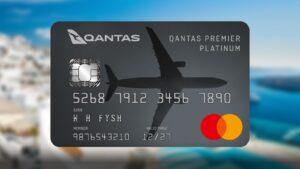While many of our readers will be chasing credit cards with high sign-up offers, others may be more interested in a card with a decent balance transfer promotion.
But what exactly is a balance transfer and how could you benefit from it? We explain how it all works and also highlight some of the cards on the market that may be suitable for you.
Note: You should consult your accountant or a finance professional on your financial situation before completing a Balance Transfer. All information provided in this guide is general only and does not take into account your personal circumstances.
What is a balance transfer credit card?
A balance transfer credit card is one that typically charges low or no interest on existing debts that you elect to transfer over to the new credit card, for a predetermined period of time. This facility could help you reduce the amount of time and interest you spend paying off the debt.
How do balance transfers on credit cards work?
Balance transfers are a special tool designed to help consolidate debt onto one credit card, which is significantly easier to manage. The other perk is a promotional interest-free period where you are free to start repaying the balance without having to worry about additional interest.
Here is a simplified example of how a balance transfer could work:
- Due to an emergency, Peter now has $5,000 of debt on his existing credit card. It will start accumulating interest at 20% p.a. He can only pay back $300 a month at the moment.
- We’ll assume a $99/year annual fee and assume he doesn’t take on any other debt.
- It would take him up to 20 months to pay off the debt. He would end up paying around $1,105 in interest and card fees on that portion of the debt.
- Let’s say he instead applied for a balance transfer and moved his $5,000 debt to a new card offering 0% p.a. interest for 18 months on the transferred amount.
- We’ll assume a $99/year annual fee and assume he doesn’t take on any other debt.
- It would now take him 17 months to pay off the debt, and he would pay no interest during this promotion — only the $99 annual card fee.
If used correctly, a balance transfer has the potential to save you from paying a lot more interest on a credit card debt.
How do I sign up for a balance transfer credit card?
- Compare current balance transfer credit card options to find the benefits that suit you the most. To help you with this, we have a selection of the best offers later in the guide.
- Check your existing debt and see if you’re able to transfer all of it to your new balance transfer card (take into account card limits and what percentage of that limit you can balance transfer).
- Click through to the card offer below to be taken to the bank’s application site. Fill this out to the best of your knowledge.
- If you are approved, activate your card when it arrives. This is usually easiest done through a bank’s website, contact centre or ATM, in order of ease.
- Wait for the balance transfer to be processed. If it was for the whole amount and your old credit card’s debt is cleared, it’s best to close that account down to avoid further fees.
Latest Balance Transfer offers
Below is a roundup of noteworthy balance transfer point-earning cards to know about.
| Cards | Annual Fee | Balance Transfer Rate | Terms (months) | Reverting Interest Rate | Expiry |
|---|---|---|---|---|---|
| Qantas Premier Platinum | $349 for the first year, $399 p.a. ongoing | 0% | 6 | 21.99% | ongoing |
| NAB Rewards Platinum (Velocity Offer) | $95 for the first year, $195 p.a. ongoing | 0% p.a. with 3% BT fee | 12 | 21.74% | 31 July 2025 |
| NAB Rewards Platinum | $95 for the first year, $195 p.a. ongoing | 0% p.a. with 3% BT fee | 12 | 21.74% | ongoing |
Further details on the above cards, including the applicable earn rates, are shown below:
Qantas Premier Platinum
- Sign-up Bonus: Up to 90,000 bonus Qantas Points
- Rewards Earn Rate: 1 Qantas Point per whole AU$1 on Domestic Spend up to $10,000 per statement period and 0.5 thereafter. 1.5 Qantas Points per whole AU$1 equivalent on international spend plus 1 additional Qantas Point per whole AU$1 on selected Qantas spend.
- Annual Fee: $349 for the first year and $399 p.a. ongoing
Earn up to 90,000 Qantas Points – 50,000 when you spend $5,000 on eligible purchases in the first 3 months, plus an additional 40,000 if you haven’t earned Qantas Points with a credit or charge card in the past 12 months. Enjoy two Qantas Club lounge passes annually, complimentary international travel insurance, and 0% p.a. on balance transfers for 6 months (2% fee applies). The annual fee is $349 in the first year, then $399 ongoing. Earn 1 Qantas Point per $1 spent and 1.5 Qantas Points per AU$1 spent overseas.
NAB Rewards Platinum Card (Velocity)
- Sign-up Bonus: Up to 80,000 bonus Velocity Points *
- Rewards Earn Rate: Earn uncapped points including 1 NAB Rewards Point earned per $1 on eligible everyday spend and 1.5 NAB Rewards Points per $1 at eligible Grocery Stores *.
- Annual Fee: $95 for the first year, $195 p.a. ongoing
The NAB Rewards Platinum Card is offering up to 80,000 Velocity Points (auto-converted from 160,000 NAB Rewards Points) and a reduced first-year annual fee for new cardholders. * NAB Rewards allows you to earn flexible points on eligible spend, and offers bonus points at eligible grocery stores and purchases made online with Webjet via NAB Rewards Store or on Webjet.com.au.
NAB Rewards Platinum Card
- Sign-up Bonus: Up to 100,000 bonus NAB Rewards Points
- Rewards Earn Rate: Earn uncapped points including 1 NAB Rewards Point earned per $1 spend on everyday purchases and 1.5 NAB Rewards Points per $1 at eligible Grocery Stores.
- Annual Fee: $195 p.a.
The NAB Rewards Platinum Card is offering up to 100,000 NAB Rewards Points for new cardholders. NAB Rewards allows you to earn flexible points on eligible spend, and offers bonus points at eligible grocery stores and purchases made online with Webjet via the NAB Rewards Store or on Webjet.com.au.
What to look for when searching for a balance transfer card
As the primary purpose of a balance transfer is to reduce debt, you should focus on important card features to minimise the risk of slipping into more debt.
- Introductory balance transfer rate: This is the promotional interest rate offered on your balance transfer. Ideally, it will be 0% or as low as possible.
- Introductory balance transfer offer duration: This is how long you will receive the reduced balance transfer interest rate for. Generally, the longer the better, as it gives you more time to pay off the debt at a lower rate. Typical offer durations are 18 months and above.
- Credit card annual fees: This is the fee you will pay to use the credit card each year from when you open the account. For example, if you plan to use an 18-month balance transfer offer, you will pay at least two year’s worth of annual fees. Of course, lower is better. Some cards have a reduced or zero first-year annual fees.
- Credit card rewards: Only when you’ve established that a card is suitable for your balance transfer needs, should you look at secondary benefits such as bonus points for signing up, or a regular earn rate for general spend on your card.
But again we remind you to consult your accountant or a finance professional on your financial situation before completing a Balance Transfer, as the information provided in this guide is general only and does not take into account your personal circumstances.
What to be mindful of with balance transfer offers
As with any financial product, there can be negative consequences if the balance transfer isn’t used properly. You can minimise the chances of that happening by being mindful of these factors before applying for any credit card.
- Balance transfer fee: This is a small percentage, usually 1.5% of the amount being transferred over, that is charged during the establishment of your balance transfer. Make sure you factor this fee into your calculations.
- Normal cash advance interest rate: If you don’t pay off your balance transfer before the end of the promotional period, any leftover amounts will usually start to have the card’s cash advance interest rate charged on it. This can be prohibitively high — sometimes more than 20% p.a.
- Credit limit: Make sure you know that the minimum credit limit on the new credit card is. Often, you aren’t able to transfer more than 90% of your total credit limit as a balance transfer. You will need to take restrictions like that into account if you have a particularly large debt.
- No interest-free days on retail purchases: Most cards have a condition where when there’s an active balance transfer, any retail purchases made on that card will not qualify for any interest-free days. This means you will be paying the card’s standard retail interest rate on new purchases from the moment they’re made. This could potentially land you into further debt, so it’s best to not use your new card for any further purchases while holding a balance transfer.
What do I need to know before applying for a balance transfer?
The usual due diligence before signing up for a credit card will be useful in this case. Here is a quick checklist of what you should know before applying for a balance transfer credit card:
- Is my debt eligible for a balance transfer? Usually, most financial companies will not balance transfer debts you already hold with them, even across different cards. This can get murkier when a financial institution is behind multiple branded credit cards.
For example, Citigroup is the issuer for both the Coles Rewards Mastercard and the Qantas Premier Platinum card. You would not be able to balance transfer between either of those cards.
- Do I meet the card minimum income and residency requirements? Some credit cards will have minimum income restrictions. If you aren’t earning enough to meet the threshold, you may have to consider an alternative card product.
Is my credit score healthy? The chances of having your application accepted are much better if you have a good credit history. Even though you may have credit card debt, it’s more important to not have missed any repayments.
Frequently Asked Questions
As you essentially have to apply for a new credit card to get a balance transfer, it will show up as a credit enquiry on your file and potentially affect your credit score.
Yes, this process is called a balance transfer. However, most financial institutions do not allow transfer between their own credit card products.
We can’t recommend one bank over another. Read our guides for the current balance transfer offers and see what product suits you the best. You may want to contact a qualified accountant or financial advisor for this.

![Our roundup of credit card offers to know about this month [July 2025]](https://i.pointhacks.com/2017/06/23173719/credit-card-stocksnap-300x171.jpg)



Great article and thanks for sharing all the fantastic offers.
Just FYI: you have mentioned “no BT fee” for both “St.George Amplify Signature – Qantas Rewards” & St.George Amplify Signature Amplify Rewards” but it does have 1% BT fees.
Thanks
As you “live and breathe” frequent flyer points, I’m interested to know your thoughts about the position taken by the author of this article, which, basically, is that ” being overly invested in the miles system is a recipe for disappointment.”
https://shop.bluffworks.com/blogs/journal/the-best-airline-credit-card-isnt-from-an-airline
Thank you for your question and bringing this article to my attention.
The premise of this article appears to be that the value of each frequent flyer point is 1c, and that reward redemptions are either incredibly hard to find, or that the availability is more along the line of an ‘any seat’ rather that the better value ‘classic flights’ redemption. Based on this premise, it is hard to argue against the author.
Having said that, my experience of using frequent flyer points has differed considerably from the author. For example, I have easily managed to find redemptions that provided me with at least 2c per point in value, and in a majority of my redemptions, much more than that. A reason for this is that I remained flexible in both my dates, as well as my flight routes in order to maximise the value I receive per point and my chances of finding an award seat.
And this is the key to frequent flyer programs. You need to be flexible, and you need to use them opportunistically in order to gain good value from them. Not all flight routes will provide good value using reward points. For example, competitive flight routes such as SYD-LAX, which has 6 airlines vying for passengers, means that there are frequent sale fares where purchasing the airfare directly may be the better option. However, flight routes with less competition, such as those from Australia to South America, generally have higher airfares, and using a fixed rate award redemption will likely provide the best value.
This article simply looks at the former, and while his argument is sound in this situation, there are clearly times when using frequent flyer programs is the way to go.
Love what you do, really appreciate the detailed emails you send through to advise us all, I am a bit like you a Frequent Flyer nut, Is there a report you can do or advise on cards that give you unlimited points, it seems the majority now have monthly limits, i am a big user and i find it hard other than Amex. I am seeking a Qantas unlimited points currently using the st George 0.75 points per dollar, i do use this for business and i am a large spender any ideas?
many thanks
Great to hear that you enjoy our articles.
Also, thank you for your suggestion. I will put this down as an article idea for us to write-up, as you’re correct, more and more cards are being points capped, so would be good to identify those cards that still have no caps (or extremely high caps).
Watch this space!
If you intend to do down this route, be very, very careful, read your T&Cs and even as the provider directly
I’d just like to ask, if you make an initial balance transfer with these cards, is interest is paid immediately on any new purchases made (ie. no interest-free period of 55 days)? My understanding is this is the case, which would need to be taken into account when considering taking up one of these cards. I’m happy to be corrected but I think this may be one of the key considerations! It’s often only mentioned in the very fine print and IMHO is one of the caveats to doing a balance transfer – the card is essentially “unusable” until the balance is paid off or you are happy to pay interest immediately on new purchases. And if it is the case, yes, you would be earning reward points on new purchases, but also immediately paying interest.